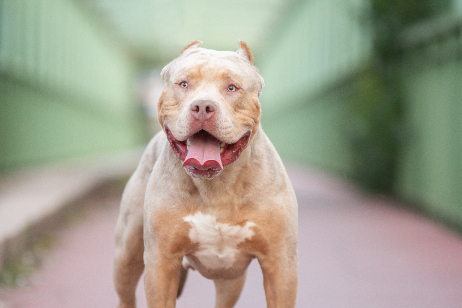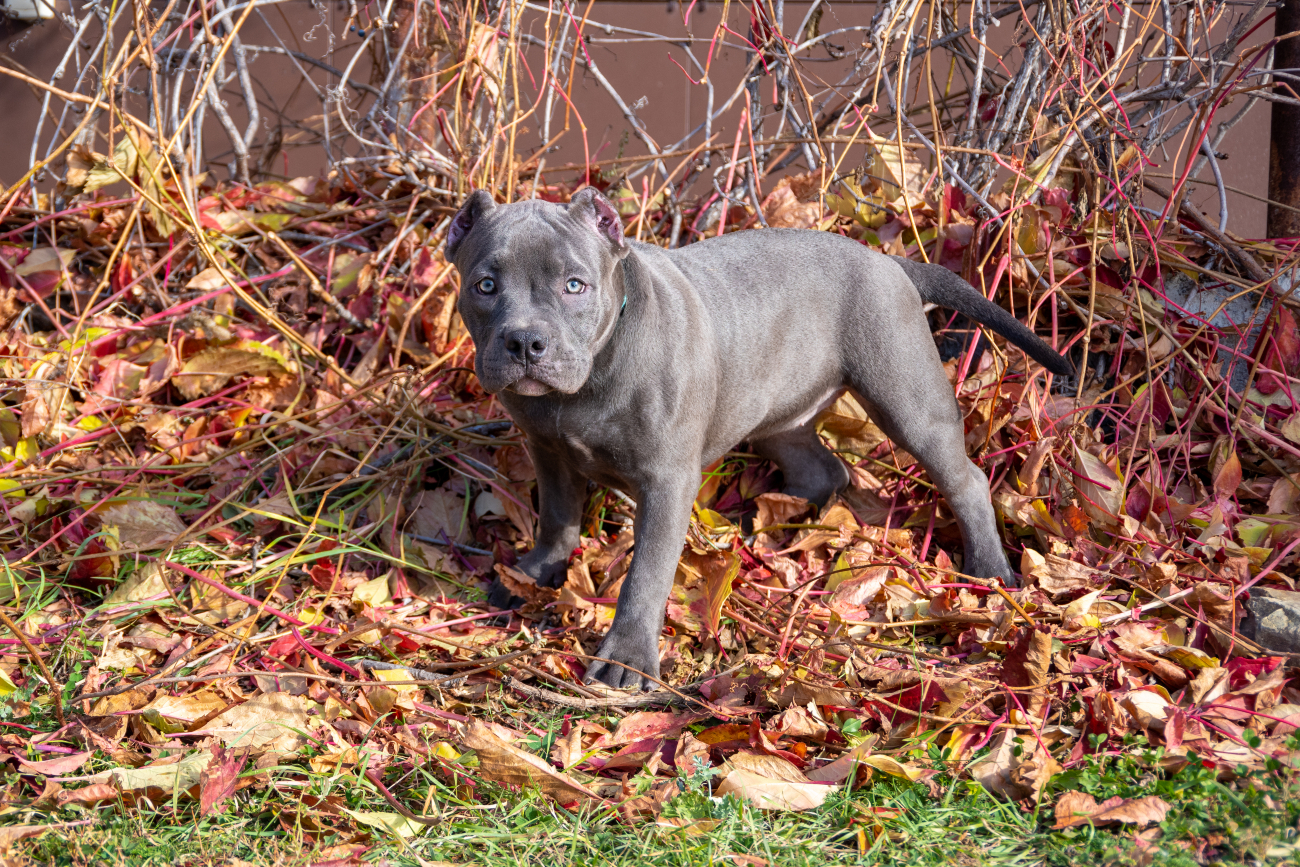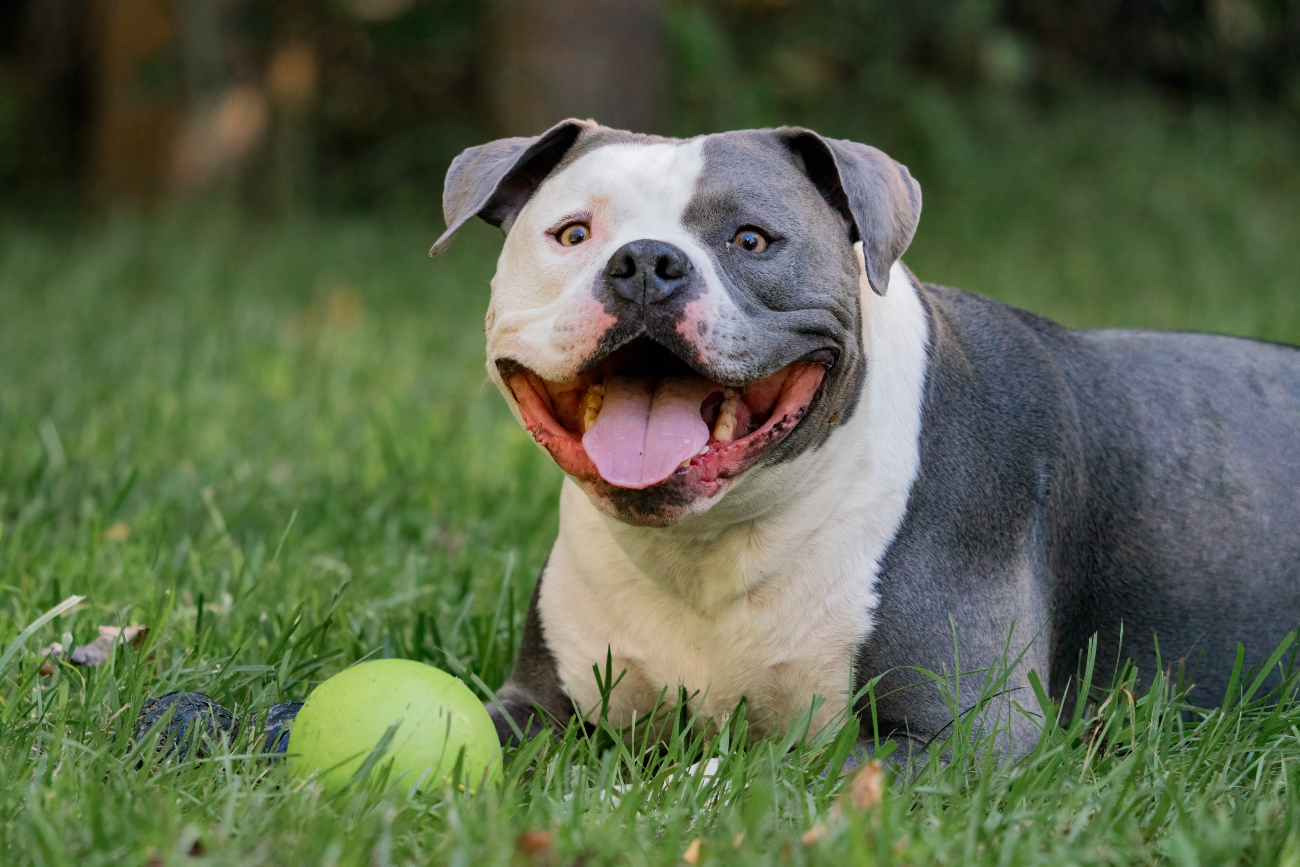XL Bully ban explained
15th February, 2024

Have you ever wondered if the XL Bully ban is true? Well, let's dive into the facts and get the truth about this controversial topic.
In this guide, we will explain what exactly an XL Bully Type Dog is and how it is defined as a specific type. If you own an American XL Bully Type dog or are concerned that your dog might resemble this type, we will discuss the restrictions and what you can do to address these concerns.
Additionally, we will explore the process of applying for an exemption if you believe your XL Bully should be exempted from the ban.
So, let's unravel the mystery behind the XL Bully dog ban and gain a better understanding of this issue.
Key takeaways
- The XL Bully breed is a variant of the American Bulldog, and is characterised by their large and muscular build, imposing size and strength, and distinctive head shape.
- Identifying an American XL Bully type involves observing their physical appearance, looking for specific head shape and body structure, and considering temperament.
- Owning an XL Bully requires consistent muzzle training and socialisation, as well as establishing clear rules and boundaries.
- The XL Bully ban in Scotland, which has not been finalised, includes restrictions and regulations, such as mandatory microchipping, proof of neutering, and exemptions requiring evidence of good behaviour and non-threat to public safety.
The Dangerous Dogs Act of 1991
The Dangerous Dogs Act of 1991 is a piece of legislation in the UK that aims to protect the public from certain types of dogs deemed to be dangerous. The law was initially introduced to tackle the increasing number of dog attacks reported during the late 1980s and early 1990s.
This breed-specific legislation faced criticism for its hasty development and lack of thorough scrutiny, which led to some inherent flaws. One such flaw is the misconception that all other breeds, except for those mentioned in the Act, pose no threat. However, any dog breed, if subjected to stress or fear, has the potential to display aggression.
What is an XL Bully?
An American Bully XL dog is a specific type of large and muscular dog breed that's known for its imposing size and strength. These dogs are characterised by their robust build, with broad chests, thick necks, and powerful hindquarters. They typically have a height ranging from 20 to 23 inches at the shoulder and weigh between 70 to 120 pounds.
In terms of temperament, XL Bullies are generally known to be loyal, affectionate, and protective. They're often described as gentle giants, displaying a calm and friendly demeanour towards their owners and families.
However, it's important to note that proper socialisation and training are crucial to ensure their well-rounded behaviour.
How is an XL Bully ‘type' defined?
When defining the 'type' of an XL Bully, it's important to consider the specific characteristics that differentiate them from other dog breeds. These characteristics are what set them apart and make them unique.
To help you understand how an XL Bully 'type' is defined, here are some key points to consider:
Characteristics and standards
XL Bullies are known for their muscular build and large size. They have a broad chest, thick bones, and a strong, powerful appearance. They also have a distinctive head shape, with a wide muzzle and strong jaws.
XL Bullies are confident and outgoing, making them excellent family pets. For full details, visit the GOV.uk website for more information and the guidelines on this.
Recognising XL Bully types
Physical traits play a significant role in recognising an American XL Bully. They have a height ranging from 19 to 23 inches at the shoulder and can weigh anywhere between 31 to 54 kilograms.
Their coat is short and glossy, with a variety of colour patterns. XL Bullies also have a distinctive muscular and athletic physiques.
Addressing concerns
If you're unsure whether your dog is an XL Bully type, there are a few key indicators to look for:
Observe their physical appearance. Do they have the characteristics mentioned above?
Pay attention to their temperament. XL Bullies are typically friendly, sociable, and gentle. If you still have concerns, consult a professional breeder or veterinarian who can provide expert advice.
Understanding the defining characteristics of an XL Bully 'type' is crucial in recognising these dogs and addressing any concerns you may have about your dog.
I own an XL Bully

If you own an XL Bully, you understand the unique characteristics and responsibilities that come with owning this breed. Understanding XL Bully’s behaviour is crucial to providing them with the appropriate care and training.
These dogs are known for their loyalty, intelligence, and strong protective instincts. They require consistent training and socialisation from an early age to ensure they grow into well-behaved and balanced dogs.
Training tips for XL Bully owners include using positive reinforcement methods such as rewards and praise. These dogs respond well to consistency and structure, so establishing clear rules and boundaries is essential.
It's also important to provide them with plenty of mental and physical stimulation to prevent boredom and destructive behaviour. Check out our blog on mentally stimulating games for dogs for some suggestions.
When it comes to health concerns, XL Bully breeds are prone to certain conditions such as hip dysplasia, allergies, and obesity.
Regular exercise, a balanced diet, and routine veterinary check-ups are necessary to maintain their overall well-being. It's important to monitor their weight and provide them with a healthy diet to prevent obesity-related issues.
Owning an XL Bully can be a rewarding experience, but it requires dedication, time, and effort. By understanding their behaviour, implementing proper training techniques, and addressing their health needs, you can ensure a happy and fulfilling life for your XL Bully.
Before we move onto the next section, it is important for us to mention that here at Purely Pet’s, we do not provide insurance cover for American Bulldogs or XL Bullies.
I'm worried my puppy might look like an XL Bully type
If you're concerned that your puppy might resemble an XL Bully type, it's important to understand the breed standards and characteristics to better assess their appearance. Here are a few things to consider when evaluating your puppy's appearance:
- Head shape: The head of an XL Bully typically has a broad, strong appearance with a well-defined jawline. Look for these features in your dog’s head shape.
- Body structure: XL Bullies have a muscular build with a wide chest and strong legs. Assess your dog’s body structure to see if it aligns with these characteristics.
- Coat type: The XL Bully breed typically has a short, dense coat that lies close to the body. Check your dog’s coat to see if it matches this description.
Applying for exemption
If you own a dog that may be classified as an XL Bully type and you want to know if your dog can join the exemption scheme, this discussion is for you.
Applying for exemption is the process by which you can exempt your XL Bully type dog from the Dangerous Dogs Act. In this section, we'll explore the certificate of exemption requirements and steps involved in applying for an exemption or certificate of exemption.
Exempting your XL Bully type dog in Scotland
To exempt your XL Bully type dog in Scotland, you'll need to follow the application process. The exemption process is necessary due to the breed-specific legislation in place, which categorises banned breeds of XL Bully type dogs as potentially dangerous dogs.
This legislation aims to reduce dog attacks and protect public safety. However, it's important to note that public perception of XL Bully type dogs may contribute to their classification as high-risk.
To apply for an exemption, you'll need to provide evidence that your dog doesn't pose a threat to public safety. This may include behavioural assessments, training certifications, and testimonials from professionals.
The exemption process ensures that responsible owners have the opportunity to demonstrate that their XL Bully type dog is well-behaved and not a risk to another dog injuring the community.
Restrictions for XL Bully types
When it comes to XL Bully types, certain new rules and restrictions need to be followed such as proof of neutering is required for XL Bully types, aiming to control the population of XL Bully dogs and prevent the breeding of these dogs.
These restrictions are put in place to ensure responsible ownership and minimise the potential risks associated with XL Bully breeds.
Proof of neutering for XL bully types
If you own an XL Bully type dog, you need to provide proof of neutering. This requirement is part of the restrictions imposed on XL Bully types to ensure responsible ownership and prevent any potential issues associated with breeding.
Neutering is the process of surgically removing the reproductive organs of a male dog, while spaying is the same procedure for females. By providing proof of neutering, owners demonstrate their commitment to preventing overpopulation and promoting the well-being of their pets.
Here is a table outlining the proof requirements for neutering XL Bully types:
|
Proof requirements |
Neutering process |
Breed identification |
|
A veterinary certificate stating the date and details of the neutering procedure |
Surgical removal of the reproductive organs under anaesthesia |
Verification of breed type through DNA testing or expert evaluation |
These requirements help ensure that XL Bully types are properly identified and that responsible ownership practices are upheld.
Conclusion
In conclusion, understanding the XL Bully ban is crucial for owners of these dogs. Knowing what an XL Bully is and how it's defined can help determine if your dog falls under this category. If you're concerned about your dog resembling an XL Bully type, it's important to research and take necessary precautions.
Applying for exemption and understanding the restrictions for XL Bully types can also help navigate this ban. Remember, knowledge is power when it comes to being a responsible dog owner.
Frequently asked questions
Are XL Bullies considered a specific breed or just a type of dog?
XL Bullies are a variant of the recognised breed American Bulldog. As such, they do not have their own specific breed standards. Their popularity has been on the rise in recent years.
Are there any health concerns or issues specific to XL Bullies?
When it comes to XL Bullies, there are some health concerns to consider. Due to their genetics, they may be prone to certain issues like hip dysplasia. Additionally, they require regular exercise to maintain their overall well-being.
How do XL Bullies compare to other bully breeds in terms of temperament and behaviour?
XL Bullies have a different temperament compared to other bully breeds. Socialisation and behaviour management are key for XL Bullies. Training techniques should be tailored to their specific needs.
Are there any specific training or exercise requirements for XL Bullies?
To properly train and care for XL Bullies, you must be aware of their specific training requirements, exercise needs, and socialisation methods. It's important to provide them with regular exercise and structured training to ensure their well-being and obedience.
Are there any restrictions on owning an XL Bully dog in certain areas or countries?
There are currently legal restrictions on owning an XL Bully Type in England and Wales. In Scotland, it is not currently a legal restriction but the law is to be finalised soon. It is widely expected that Northern Ireland and the Channel Islands will follow suit in the future.
Will the ban of American XL Bully affect owners of American Bulldogs?

The ban of the American XL Bully dogs has stirred up a whirlwind of debates in various dog-lover circles. But how does this ban on XL Bully affect owners of American Bulldogs?
As explained previously, XL Bully dogs are all variations of American Bulldogs, but that does not mean all American Bulldogs are XL Bullies, because they are not. Therefore, the ban specifically targeting the XL Bully shouldn't directly impact American Bulldog owners in terms of legality.
However, it may potentially create a ripple effect in public perception and breed-specific legislation. This ban might unintentionally foster a negative stereotype towards all large, muscular breeds, including American Bulldogs. Public opinion may be shaped by such regulations, and people might start viewing all bulky dogs as potentially dangerous or undesirable.
This could make life more challenging for American Bulldog owners when it comes to issues like housing restrictions. As explained previously, we do not provide insurance for any American Bulldogs.
Helpful Pages
Recent Posts
Pet Insurance Quote
- 98% claims paid *
- Claims paid directly to vets
- 24/7 vet video consultations
- Interest free monthly payments




